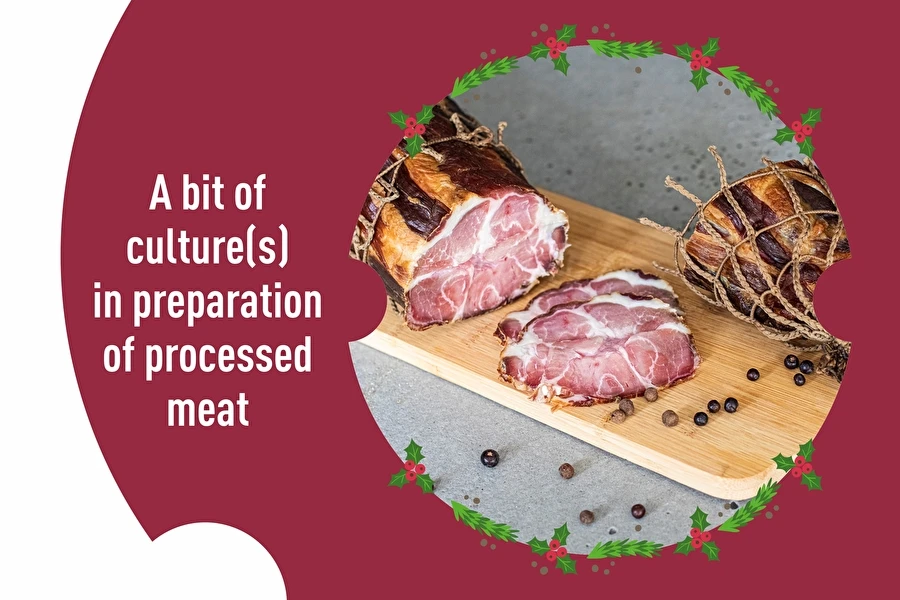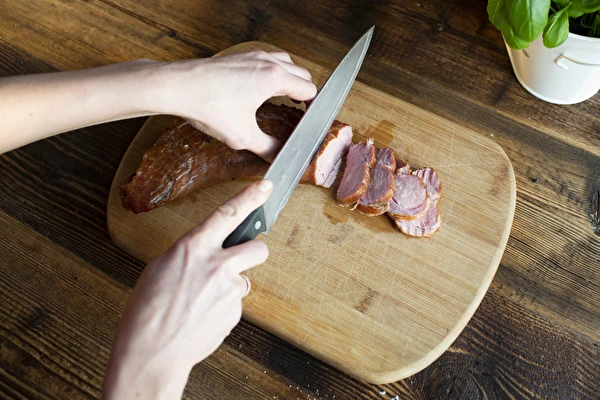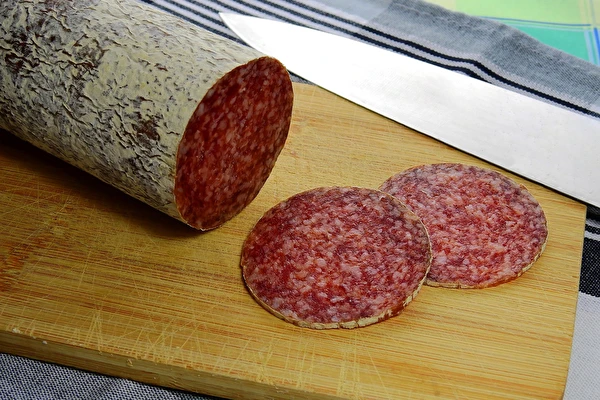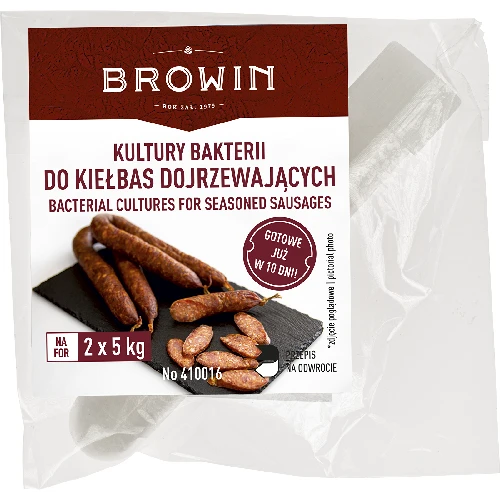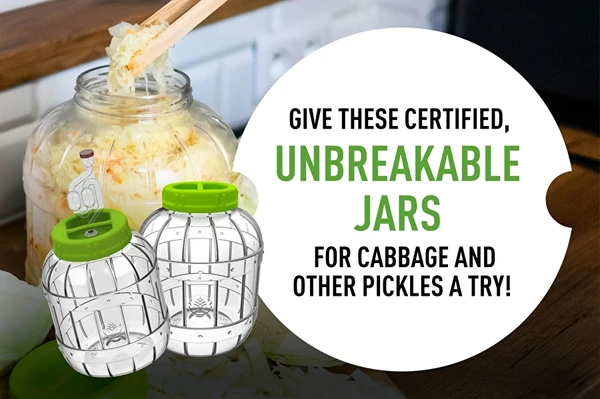Such methods of meat preservation have been known from the very beginning of history, although this process usually took place on its own. It can be compared to the situation known to winemakers, when “spontaneous” fermentation of the grapes harvested takes place, for which the so-called wild yeast naturally present on fruit is responsible. Such process may end up in success, but no one can guarantee it in 100% (50% tops). Even if one year the wine turns out quite good, in the next one it could be a disaster, as the yeast living on the bushes may undergo many mutations, e.g. under the influence of external factors. This may result on acescence of wine, which means – mildly speaking – a rather dull aroma. It may also become spoiled due to growth of other undesirable microbes. It is the same in the case of meat. Fermentation carried out on the basis of microbe cultures that are naturally present on meat may entail a lot of hazards. It may lead to obtaining meat that will not exactly meet our expectations with regard to its structure and sensory properties. Let us not risk “wild” drying, as the growth of pathogenic microflora [e.g. Staphylococcus aureus, Escherichia coli, etc.] happens often during its course.
In order to ensure quick and safe ripening of homemade meat product, let us use specially selected starter cultures. They do not only protect against the growth of harmful microbes, but also ensure the perfect, characteristic sour taste, aroma and appearance. What is the most popular at the moment if the mixtures of bacteria cultures that were selected in such a manner as to work on multiple aspects of the ripening process. We can be sure that the strains selected have been thoroughly examined with regard to microbiological purity, properties, time and conditions of fermentations, and resistance to external factors. Usually the cultures used are dehydrated / dried. This form ensures easiness of storing and dosing them during introduction into the product.
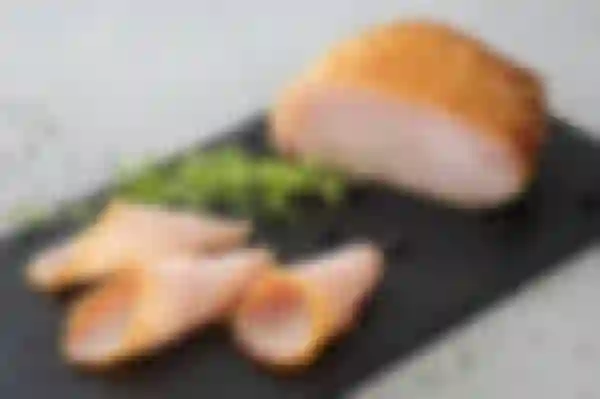
AND NOW SOME TECHNOLOGY... HOW DO THESE RECOMMENDED CULTURES WORK?
At the beginning it is necessary to underline that they significantly speed up the ripening process (in controlled conditions).
The process taking place in ripening meat relies mainly on lactic fermentation of sugars by the starter microflora. However, in order to the process to proceed correctly, it is very important to facilitate the growth of the cultures by providing them with appropriate conditions and simultaneously limiting the growth of pathogenic microbes. That is why the cultures should be added already at the very beginning of the ripening process, best together with a properly prepared curing brine (saltpetre + salt + water + sugar). The nitrates included in it will inhibit the growth of undesirable organisms, providing starter cultures with time to multiply properly and settle the environment to the extent sufficient for dominating other forms that might exist in it. At the same time, nitrites perform the fundamental role of an antioxidant.
The fermentation in presence of starter cultures and nitrites usually takes 3-8 days. Afterwards, the main ripening / drying takes place (for a few weeks). It is necessary to underline that it is during the fermentation that the cold smoking (in smoke with temperature of not more than 26⁰C) can be conducted – after thorough drying of meat. This process has a tremendous impact on the flavour and aroma of products. The aromatic smoke provides additional preservation of products. It is important to ventilate the input during smoking (which may take from several ours to several days) as thick smoke may make the meat acidic.
The ripening itself proceeds best in the temperature of 12-24⁰C. Lower temperatures are certainly allowed (e.g. during ripening in a refrigerator), but it should be expected to extend the process – which, in my opinion, is beneficial for the product in view of greater intensification of aromas produced during ripening. However, it is not recommended to use temperatures lower than 6⁰C.
Ripening is usually conducted until the pH of the meat achieves the right level, i.e., about 4.8-5.3. The process can be conducted in a refrigerator with maintenance of appropriate humidity (about 80%), in a semi-open container. Alternatively, after the period of fermentation and a few days of drying the product can be vacuum-packed (and best “left forgotten” for a while).

WHAT IS NECESSARY IN ORDER TO START THE PROCESS CORRECTLY?
Obviously, it is necessary to start with selecting and purchasing the right cultures. But what to do next, once we know the general outline of the process? Is it enough to simply add the bacteria to the meat and leave it? Not exactly.
As we know, in order for the fermentation process to take place, the bacteria needs an ingredient constituting their nutrient. It is mainly sugar, the amount of which in sugar is negligible. By adding it in appropriate amount, we can have a perfect control over the process (somewhat similarly to the case of home wine making). Usually, about 3-5 g of sugar per 1 kg of meat is enough. It is also important to provide the appropriate amount of nitrates (2-3 g per 1 kg of meat) or nitrites (0.15 g per 1 kg of meat). Temperature is important as well: at the beginning of fermentation it is best to keep the room temperature, and then 15-24⁰C with shorter ripening time or lower with longer ripening time, but not below 6-7⁰C. It is also advantageous to dissolve the bacteria cultures in advance in a small amount of water (even about one hour prior to adding), which will speed up their multiplication during the next stage.
As I mentioned before, the fermentation process can be combined with the cold smoking process, providing additional microbiological stability and the flavour and aroma desired. However, if you are not capable of conducting such a process – do not worry. A delicious product can be obtaining without smoking as well. To achieve a better effect in such case, we can season the meat with our favourite herbs and spices after removing it from the brine.
HOW TO INTRODUCE STARTER CULTURES INTO MEAT?
We know the process and the physicochemical conditions that we need to ensure for our cultures within it. But what do after we have dissolved our cultures? This obviously depends on the degree of meat fragmentation and the structure of meat. If we are preparing sausages, the starter cultures – after dissolution in a small amount of water – should be simply added straight to the meat mass, together with saltpetre, sugar, salt and seasoning. The whole setup should be left in room temperature for a few hours (3-4 hours) and then placed in a refrigerator for 24-48 hours. The inoculation process is much more difficult in the case of products from non-fragmented meat. What becomes very important then is the selection of the material – the meat should be soft, fresh and without chemical additives. These additives harden the meat, making it difficult at the same time for the curing brine ingredients and the bacteria to penetrate the inside of it, thus extending the duration of the process. This in turn exposes the meat to the growth of undesirable microflora.
Meat pieces are best cured in brine with the use of injections. It is necessary to prepare the curing brine (saltpetre, water, salt, sugar). After dissolving all the ingredients, it is beast to measure about 200-500 mL and pour the dissolved starter cultures into that portion. Some of the liquid so prepared should be injected into different areas of the meat pieces, while the rest should be mixed with the curing brine.
It is obviously possible to rub the dissolved cultures into the meat and cure it dry, or pour the cultures into the brine without injections, but this will make the process of meat penetration longer and – what needs to be taken into account – less effective.
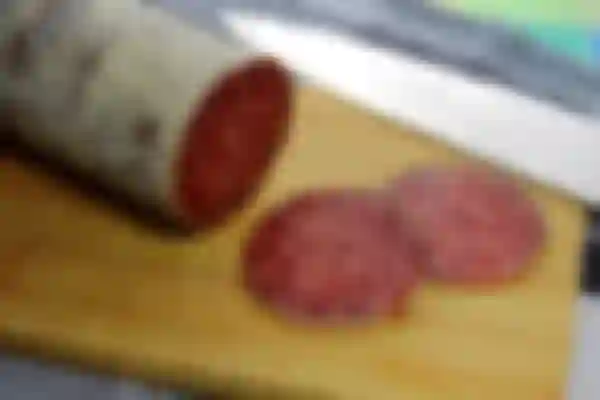
WHICH STARTER CULTURES TO CHOOSE?
The basis for production of properly directed products is the right choice of the culture mixture. We suggest to mixture of properly selected starter cultures that we prepared in BROWIN in order to answer the expectation of the most demanding processed meat producers and seekers of good flavour. These mixtures will be excellent for both sausage fillings and meat pieces.
For ripening products made of fragmented meat:
(such as chorizo, salami, etc.):
Bacterial cultures for ripening sausages (2 g)
It is a mixture of the following strains: Staphylococcus carnosus, Staphylococcus xylosus, Lactobacillus curvatus, Lactobacillus sakei.
For products made of non-fragmented meat, in pieces
(such as pork loin, sirloin, neck, ham, etc.):
Bacterial cultures for ripening meats (2 g)
It is a mixture of the following strains: Staphylococcus carnosus, Staphylococcus xylosus, Lactobacillus sakei, Pediococcus pentosaceus.
The characteristics of the above mentioned strains of bacteria included in the starter cultures will be described in more detail in the table below:
Microbe species included in the cultures |
Type |
Type of transformations |
Effects of influence |
|
Staphylococcus carnosus |
gram-positive cocci |
- capable of producing enzymes that cause reduction in nitrates and nitrites;
- reduce the peroxide produced by other microbes that may have a destructive impact on the dyes deciding on the colour of meat;
- lipolysis – dissolution of fat cells. |
- prevent the formation of residual nitrite compounds during curing;
- participate in the colour stabilisation process in the ripening process;
- slow down the rancidification of meat;
- imbue the meat with aromas characteristics ripened meat;
- are susceptible to change in water resource and multiply rather poorly in raw products, which is why they need to be added in the right amount already at the beginning of the process, when the humidity is the highest. |
|
Staphylococcus xylosus |
gram-positive cocci |
|
Lactobacillus curvatus |
lactic acid bacteria |
- production of lactic acid
(lowering pH to 4.8-5.0). |
- when added at the beginning of the process, they quickly settle a given environment, not allowing the growth of any undesirable bacteria;
- thank to the fact the pH is lowering the areas quickly, the time of ripening in comparison to self-started ripening decreases even fivefold.
- speed up meat drying;
- when working, they also produce a series of additional metabolic products, having a characteristic way of influencing the aroma of raw materials.
- Lactobacillus strains are particularly capable of multiplying quickly even with very low water resources. |
|
Lactobacillus sakei |
lactic acid bacteria |
|
Pediococcus pentosaceus |
lactic acid bacteria |
|
To sum up, it is worth underlining that using the bacteria cultures, also probiotic ones, entails a great deal of benefits. The fundamental aspect are the bactericidal aspects of these cultures in relation to other undesirable microbes. The appropriate combination of a curing mixture and a mix of dedicated bacterial cultures ensure a perfect, correctly directed product. It is also important to add the cultures already at the beginning of the process and make sure than the meats have appropriate external conditions during ripening. Obviously, in order to obtain an enrapturing product it is necessary adhere to the recommendations specified in the provisions.
Good luck making delicious and varied homemade meats – also ripening ones!







 Cheese calculator
Cheese calculator



 Winemaking
Winemaking





